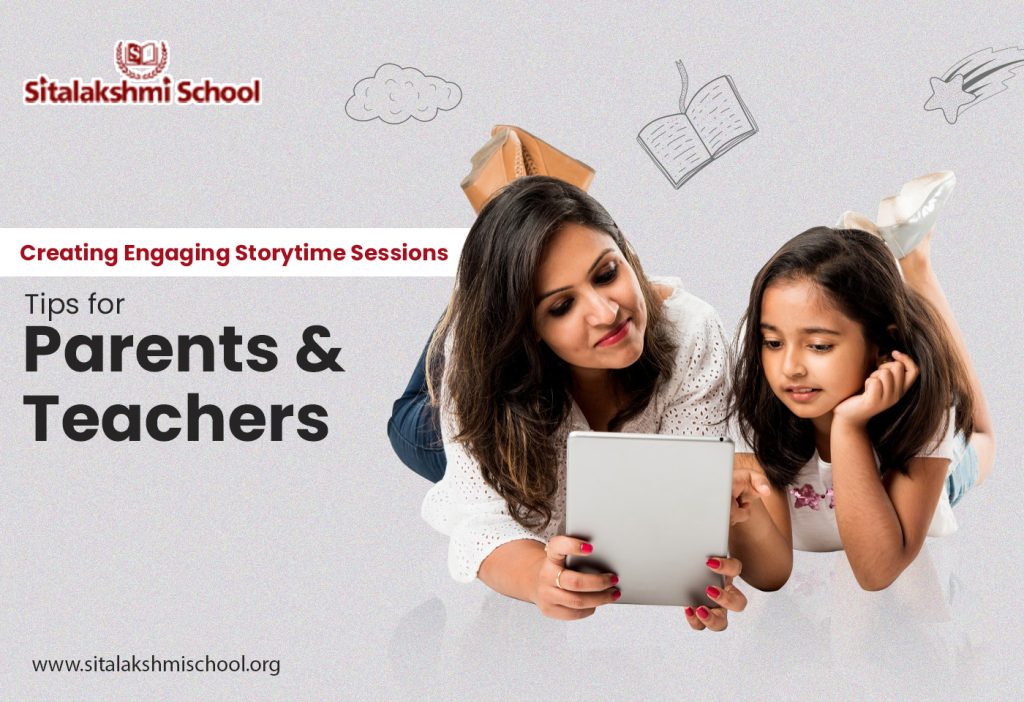Storytime sessions are invaluable for children’s development, sparking their imagination, enhancing language skills, and fostering a love for reading. Whether you’re a parent or a teacher, conducting engaging storytime sessions for kids is a powerful tool for nurturing young minds. In this blog, we’ll explore various tips and techniques to make your storytime sessions captivating and enjoyable.
Choose Age-Appropriate Books:
For infants and toddlers, select sturdy board books with vibrant colors and simple, repetitive text. These books are perfect for introducing basic concepts and engaging their senses. Preschoolers and early elementary children will benefit from picture books with engaging illustrations and simple stories that they can follow along with. Older kids may enjoy chapter books or longer narratives that offer opportunities for discussion and deeper exploration.
Create a Cozy Atmosphere:
Designate a special space for storytime with soft rugs or mats, comfortable cushions or bean bags, and soft lighting. A cozy, dedicated area sets the stage for an immersive experience. Consider using themed decorations or props related to the story you’re reading to create a sense of anticipation and excitement.
Use Expressive Reading:
Dive into character voices and accents to differentiate characters and make them memorable. Use body language, such as hand gestures or facial expressions, to convey emotions and actions in the story. Pause strategically to build suspense or to allow children to absorb key plot points.
Encourage Participation:
Engage children by inviting them to predict what might happen next or share their thoughts and feelings about the characters or events. Use prompts like, “What would you do if you were in the story?” or “Can you tell me more about your favorite part?” Encourage group discussions, allowing children to learn from each other’s perspectives.
Incorporate Props and Visual Aids:
Select props that are relevant to the story, such as a toy animal for an animal-themed book or a magnifying glass for a mystery story. Visual aids like storyboards or illustrations can help children follow complex narratives and visualize story elements.
Introduce Multisensory Elements:
Engage all the senses by incorporating sensory elements. For example, if the story mentions a rainstorm, play soft rain sounds in the background. Create sensory bins with items like sand, water beads, or scented objects that relate to the story to provide a tactile experience.
Foster Critical Thinking:
Encourage children to think critically by asking questions that prompt them to analyze the story’s themes, character motivations, or the consequences of certain actions. Explore ethical dilemmas presented in the plot and discuss how the characters’ decisions impact the story.
Stick to a Routine:
Consistency is reassuring for children. Set a regular storytime schedule, and let children know when to expect it. This routine can help establish reading as an integral part of their day. Show genuine excitement about the story and reading in general. Your enthusiasm will be contagious and make the story more engaging.
Plan your storytelling sessions ahead of time, considering themes, genres, or specific books for each session. This ensures a well-rounded reading experience for children.
Use positive reinforcement to motivate children to read more. Reward their reading milestones with certificates, small prizes, or even a special “storyteller of the day” role.
Sitalakshmi Girls School Creating engaging storytime sessions for children involves a combination of thoughtful book selection, a captivating storytelling environment, and interactive techniques that stimulate their imagination and curiosity. By following these tips and adapting them to your specific audience, you can foster a deep and lasting love for reading in young minds. Remember that each child is unique, so don’t be afraid to experiment and tailor your approach to what works best for them. Happy storytelling!

